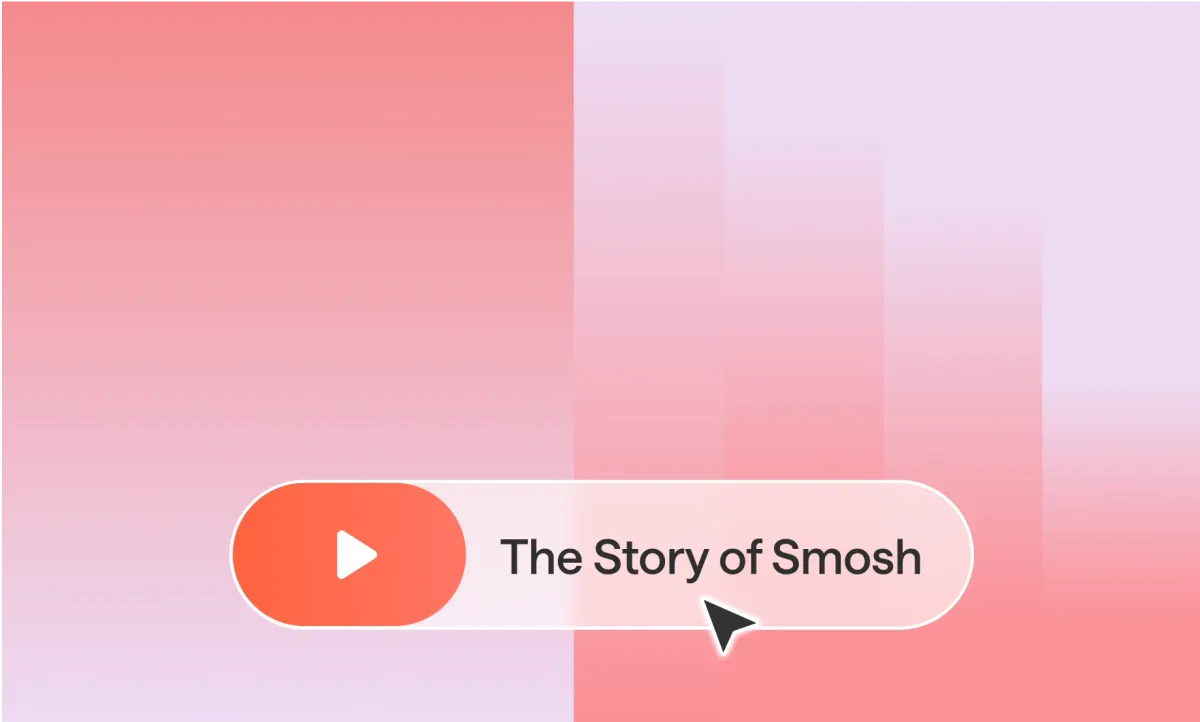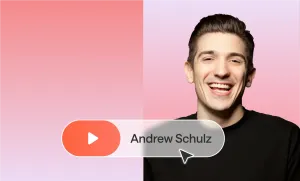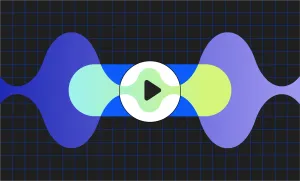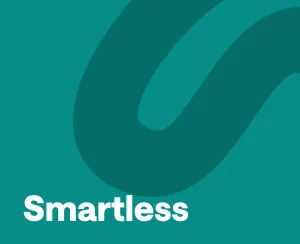It started with lip-syncing to Pokémon intros on a dial-up connection, and somehow became one of the longest-running comedy franchises on YouTube.
For a certain generation, Smosh was the first reason they opened a YouTube account. For another, it’s that weirdly persistent channel with grown men screaming about beef products and video game logic.
But for all of us? It’s proof that online fame doesn’t just burn bright and fade fast. Sometimes, it mutates and evolves.
And with over 26.9 million subscribers, 11 billion views, and a storyline that includes corporate takeovers, creator breakups, and a full-circle return to independence, Smosh has earned its title as the internet’s longest-running sketch comedy soap opera.
What Even Is Smosh?
Short answer: Internet comedy chaos.
Long answer? Smosh is a sketch comedy YouTube channel originally created in 2005 by childhood best friends Ian Hecox and Anthony Padilla. The duo first gained fame by uploading lo-fi, chaotic parodies of pop culture, ranging from Pokémon to Mortal Kombat, long before YouTube had a “Trending” tab.
Their early videos had that specific 2000s magic: flip-phone sound effects, Hot Topic wardrobes, and jokes that now live somewhere between nostalgia and cancellation. Think: internet-born “Saturday Night Live,” but with 99% fewer rules and 300% more fart jokes.
Over time, the duo expanded Smosh into a comedy empire, adding cast members, spinoff channels, and even feature-length films. Their sketches grew more polished, the jokes faster-paced, and the reach wider. But the essence stayed the same: weird, loud, internet-first humor made by two guys who understood the algorithm before the rest of us knew what it meant.
What Kind of Content Are We Talking About?
Smosh has a type. That type is: everything, all the time.
At its core, the main Smosh channel focuses on short-form sketch comedy, absurd, over-the-top, sometimes painfully relatable, and always memeable. Over the years, they’ve created content that spans across:
- Pop culture parodies (like Pokémon in Real Life or Harry Potter Deleted Scenes)
- Original music videos (yes, The Legend of Zelda Rap is still iconic)
- Fake commercials (Beef ‘n Go, anyone?)
- Ridiculous listicles brought to life (Every ___ Ever series)
Some of their most viewed videos feel like relics from a golden YouTube era:
- Beef ‘n Go (2008) – 100M+ views of processed meat-related absurdity
- Ultimate Assassin’s Creed 3 Song – 62M+ views, gamers still vibing
- The Legend of Zelda Rap – 56M+ views, proof that nerds know how to spit bars
- Harry Potter Deleted Scenes – 46M+ views, lowbrow magic at its finest
- Pokémon in Real Life – 44M+ views, where nostalgia and cringe meet
Beyond the sketches, Smosh also launched a whole network of side channels over the years, including:
- Smosh Pit – behind-the-scenes content, games, and challenges
- Smosh Games – you guessed it: gaming content, often starring cast members in chaotic multiplayer mayhem
- SmoshCast – a podcast-style talk show that dove into personal stories and the behind-the-scenes mess
- Smosh Reads Reddit Stories – dramatic (and often hilarious) readings of wild Reddit threads, brought to life by the cast’s reactions, voices, and total disbelief.
Tone-wise, Smosh walks the fine line between dumb and smart. Their sketches often tackle real-life frustrations (bad customer service, awkward dates, weird teachers) through a lens of absurdity. If SNL is your uncle making clever jokes at the dinner table, Smosh is your cousin duct-taping a banana to the wall and calling it performance art. And somehow, it works.
Who Watches Smosh?
Smosh’s core audience has shifted over the years. Originally beloved by pre-teen MySpace kids, their viewer base has matured with them. Today, they’re watched by everyone from high school students looking for something fun after school, to adults in their late 20s watching for that dopamine hit of “wow, I used to quote this in 8th grade.”
They’ve also managed to carve out a niche with comedy fans who like a mix of chaotic energy and relatable frustration, think: people who binge Vine compilations and also have a surprisingly deep opinion about sketch comedy formats.
It’s not exactly “family-friendly,” but it’s not full-on adult content either. It lives in that sweet, sarcastic spot: too edgy for Nickelodeon, too tame for South Park.
A Timeline That Deserves Its Own Series
Let’s break it down quickly, because yes, there was drama, and yes, it’s wild.
- 2005 – Smosh is born. Anthony and Ian upload a video lip-syncing the Pokémon theme. The internet loses its collective mind. YouTube has a new star.
- 2011 – Smosh is acquired by Alloy Digital, later Defy Media. The brand expands rapidly, launching new shows and recruiting cast members.
- 2017 – Anthony Padilla announces he’s leaving Smosh due to lack of creative freedom. Fans spiral. Internet mourns the end of an era.
- 2018 – Defy Media suddenly shuts down. Smosh is left without a home… until Rhett and Link’s Mythical Entertainment steps in and saves the day.
- 2023 – The unthinkable happens. Anthony returns. He and Ian repurchase the majority stake in Smosh, officially reclaiming control of their baby. Cue the comeback of the century.
What could’ve been a cautionary tale became one of the most inspiring redemption arcs in creator history.
Smosh Creators: Ian Hecox & Anthony Padilla
Smosh has always been built on the chemistry between two people: Ian Hecox and Anthony Padilla. Childhood friends turned internet pioneers, they weren’t just early adopters of YouTube, they helped define what it could be.
The story started in Carmichael, California, where the duo met in sixth grade. What began as schoolyard jokes and homemade comics eventually morphed into Smosh.com, a Flash animation site Padilla created in 2002. But in 2005, everything changed. YouTube had just launched. They uploaded a video of themselves lip-syncing the Pokémon theme song. The internet took notice.
That video went viral, at the time, it became the most viewed video on YouTube, and the Smosh channel was born. From there, their sketches exploded in popularity, tapping into a raw, chaotic humor that resonated with young internet users who didn’t see themselves represented in traditional media.
While many YouTubers were still figuring out what content to post, Ian and Anthony were already creating multi-character sketch series, music parodies, and character-driven comedy. They had a formula: absurd premises, rapid editing, exaggerated expressions, and underneath it all, a very specific kind of sincerity. Even the wildest Smosh videos felt like they were made by two real friends trying to make each other laugh.
And for a long time, it worked.
Creative Success Meets Corporate Reality
As the channel grew, so did the demand. In 2011, Smosh was acquired by Alloy Digital (later rebranded as Defy Media). The acquisition gave the team more resources to expand, and for a few years, it paid off. Smosh launched several spinoff channels, hired a larger cast, and diversified their formats with shows like Smosh Games, Smosh Pit, and SmoshCast. They even released a feature film, Smosh: The Movie, in 2015.
But the deal came with a cost. While the business expanded, creative freedom contracted.
By 2017, Anthony Padilla had had enough. In an emotional video titled Why I Left Smosh, he announced his departure from the brand he co-founded. His reason? He no longer had full control over the content he was creating. Decisions were now filtered through corporate executives, deadlines, monetization requirements, and brand guidelines. The creative space that once felt like home had become something else entirely.
It was a shock to fans, and to Ian too. For the first time, Smosh would go on without one of its founding voices.
Padilla pivoted to his own channel, focusing on documentary-style interviews with a wide range of guests, from internet celebrities to marginalized communities. His new work leaned into deeper storytelling, social commentary, and one-on-one conversations. It was a completely different tone from his Smosh days, but still driven by the same curiosity and empathy.
Ian, meanwhile, stayed behind to help keep the Smosh brand afloat, no small task, especially as cracks began to show in the infrastructure around him.
The Collapse of Defy Media
Behind the scenes, Defy Media was facing major internal issues. And in 2018, it all came to a sudden halt. Without warning, the company shut down, leaving Smosh without a parent company, a team, or a home.
For many, that could’ve been the end. But the Smosh team refused to let it fall apart. That same year, Mythical Entertainment, founded by fellow YouTube veterans Rhett and Link, stepped in to acquire Smosh. Their support provided both a creative safety net and a sense of continuity. Smosh kept producing, kept experimenting, and, most importantly, kept its audience.
While Anthony remained independent during this time, the friendship between the two creators never truly faded. And in 2023, the unthinkable happened.
The Return of Anthony and Smosh 2.0
On June 20, 2023, Anthony Padilla and Ian Hecox posted a video titled We Bought Smosh. And they meant it literally.
With help from Mythical Entertainment, the duo had repurchased a majority stake in Smosh, reclaiming ownership of the brand they started nearly two decades prior. It was one of the first creator-to-creator acquisitions of its kind, and a full-circle moment not just for Ian and Anthony, but for longtime fans who had followed their journey since the very beginning.
This wasn’t just a feel-good reunion. It marked the beginning of a new chapter, one where Smosh could once again be led by the voices that built it.
Since the acquisition, the content has reflected a more stripped-back, roots-focused approach. Anthony and Ian returned to sketch videos together, tapping into the exact kind of energy that first made the channel famous: two friends bouncing off each other with quick-fire writing and a shared love of ridiculous ideas.
They also took time to explain their decision and reflect on the years apart. In interviews and behind-the-scenes videos, both acknowledged how time, growth, and outside projects helped them evolve as creators,and how returning to Smosh felt like coming home, but with a new sense of purpose.
It wasn’t about recapturing the past. It was about building something better, using everything they’d learned along the way.
Smosh by the Numbers: Stats That Speak Volumes
Nostalgia might have fueled Smosh’s comeback, but numbers are proof they never really left.
As of mid-2025, Smosh has over 26.9 million subscribers and a staggering 11+ billion total views on YouTube. With over 2,090 videos uploaded since 2005, they remain one of the most prolific comedy creators on the platform.
They still average around 888,000 views per day and over 26 million views per month, according to public analytics. That kind of engagement isn’t just impressive for a legacy channel; it’s rare for any creator, especially in a space where audience interest can change overnight.
Their earnings reflect that consistency, too. While estimates vary based on ad rates and sponsorships, Smosh reportedly earns anywhere from $6,700 to $107,000 monthly, with annual projections reaching up to $1.1 million from YouTube alone. That doesn't even include revenue from branded content, merchandise, or live events.
Smosh also ranks:
- 233rd globally in subscriber count
- 792nd in total views across YouTube
- 26th in the comedy category
- Top 100 in the U.S. overall
And in terms of cultural milestones? They’ve had multiple reigns as the most-subscribed YouTube channel, not just once, but three separate times (in 2006, 2008, and again in 2013). Their parody sketches and game-inspired music videos routinely pull in tens of millions of views, with classics like Beef ‘n Go sitting above the 100 million mark.
While Smosh has never chased virality the way newer creators often do, their videos have had an uncanny ability to break through and stay relevant.
Smosh Reviews
With a fanbase that spans nearly two decades, opinions on Smosh's evolution are as varied as the sketches themselves.Here are just a few that will give you a glimpse into how fans are experiencing the channel today.
“Personally I miss the old stuff like game bang and being goofy, and just having fun I don’t really enjoy the board games or the super scripted things... I’ve been watching is the Reddit stories and the until dawn play through only bc I love that game and want to see the choices they make... I just wish it was more of the same vibe...” – ArgentStorm4264
“ I mostly watch Smosh Pit overall, but the Main channel I do tend to watch. I feel like it's necessary... it brings something for the old and new audiences. Flashback I love... t's Ian and Anothy roasting themselves and their old ideas. I always thought it was funny. As for the new sketches, it's often a hit or miss, but I think that's the point. If you can't connect with one, there's another you can watch.” – KateyBee2
What People Love About Smosh
Many fans still adore Smosh for its chaotic, sketch-driven humor and nostalgic energy. The return of Anthony Padilla, alongside Ian Hecox, reignited a sense of authenticity and brought back some of the original spark. Shows like Flashback and Reddit Stories continue to strike a balance between old-school fun and new-school polish, offering long-time fans and newcomers alike something to latch onto. Viewers also appreciate the variety of channels under the Smosh umbrella, allowing them to pick and choose content that suits their tastes.
What People Dislike About Smosh
That said, not everyone is on board with the current direction. Some longtime viewers miss the spontaneity and goofiness of earlier formats like Game Bang and punishment challenges, feeling that recent sketches and game shows have become overly scripted or too “safe.” There's also some critique around tone; fans have mentioned that the newer content can feel a little too structured or serious compared to the chaotic charm of Smosh’s early years.
Final Thoughts: Smosh in 2025 and Beyond
The internet isn’t exactly known for second chances. But Smosh is a rare exception: a channel that didn’t just survive creative burnout, corporate interference, and a public breakup, it rebounded, independently, with its original creators back at the helm.
In 2025, Smosh represents more than just sketch comedy. It’s a case study in longevity, adaptability, and the value of staying true to your creative core, even if it takes a detour to get there.
And in an industry where creators are often forced to choose between financial growth and creative control, Smosh’s story shows it’s possible to have both, if you’re willing to fight for it.








